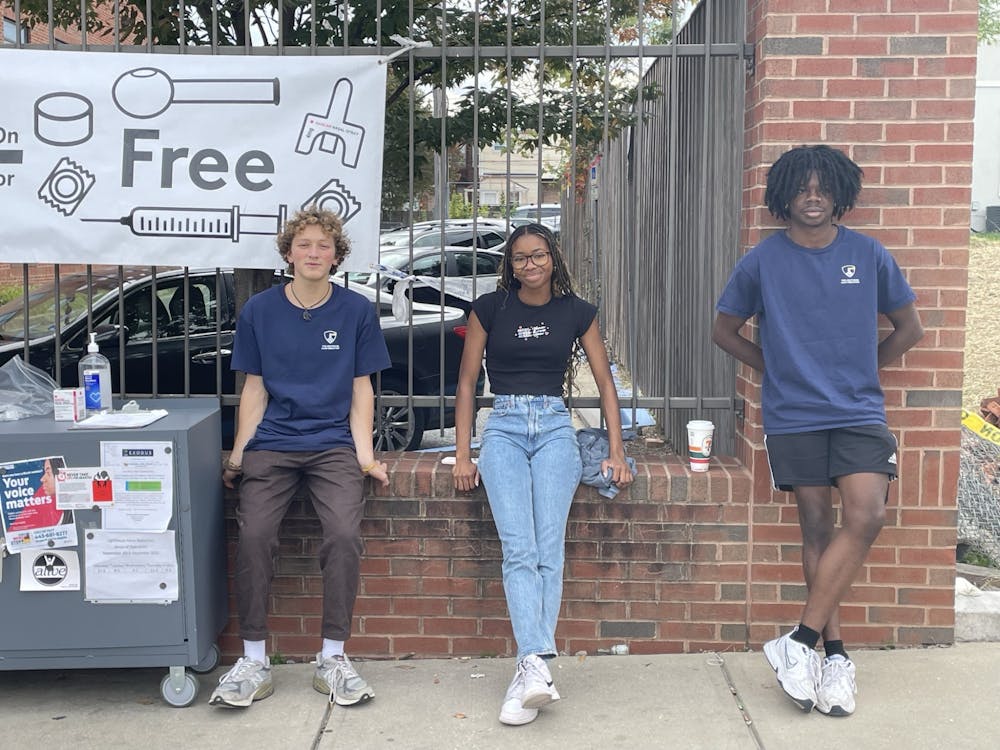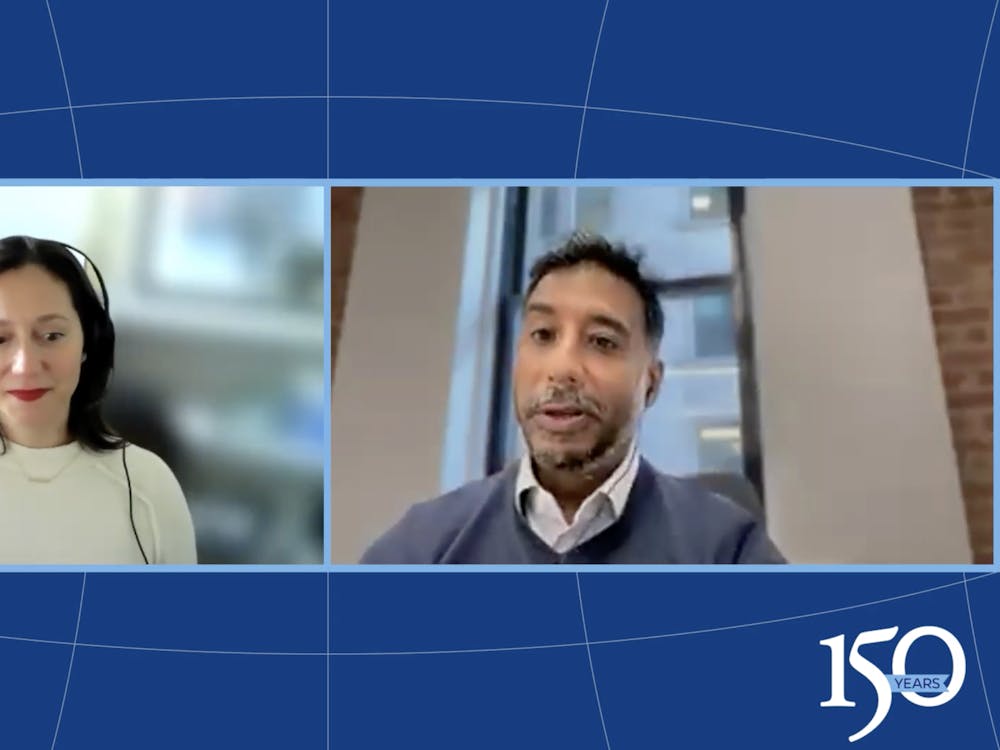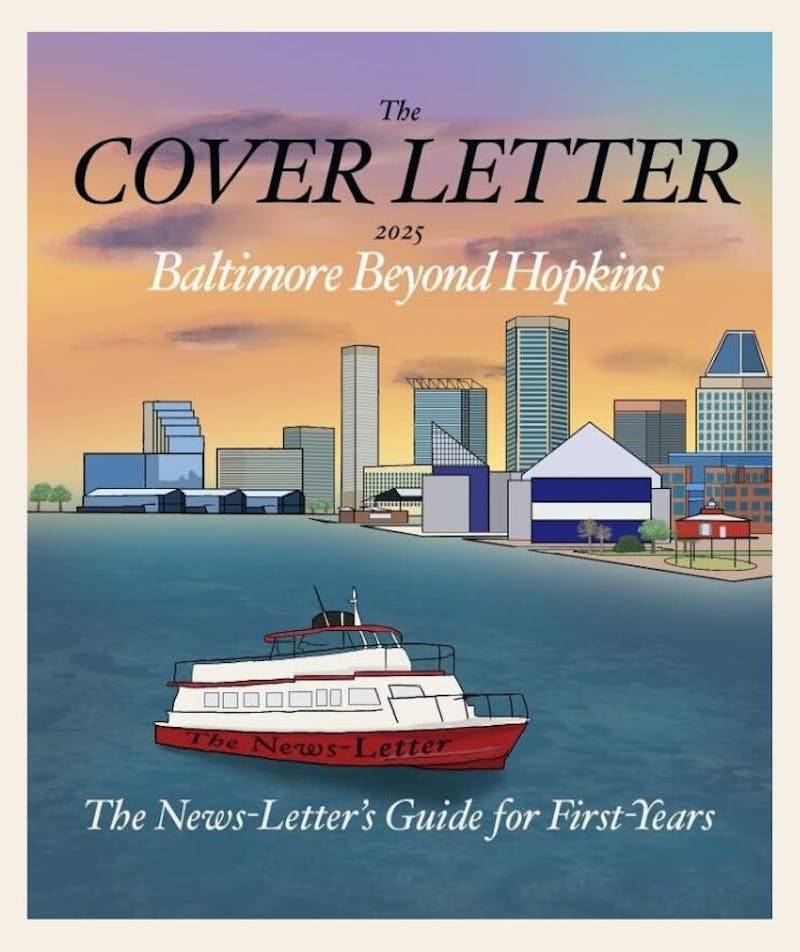One Tuesday morning, while standing next to my club’s harm reduction card, I watched as an elderly woman in a wheelchair pushed herself forward, nearly passing me on her way to the Johns Hopkins Hospital. She looked up to greet me, then caught one glimpse of our banner which dons clip art images of a syringe, a small pipe with smoke coming out of it and Band-Aids.
“Do you have any Narcan?” she asked, reversing her chair to turn to me with an inquisitive smile.
“Sure thing,” I responded. I opened the cabinet door, revealing a stack of white Narcan boxes. This is one of the most important supplies we distribute; a device that sprays a small dose of naloxone into the nose, preventing terminal overdose episodes by blocking opioid receptors.
Hop-On Harm Reduction has become a critical site of care for the Middle East neighborhoods of Baltimore. Outside of naloxone, we also provide clean needles and smoking kits, making injection and consumption of drugs safer without guilt and pressure that rehab centers and the general public often propagate. More recently, we have expanded our operation to include wound care supplies, specifically addressing skin-related illnesses that result from the consumption of opioids.
I handed the lady the box as she rummaged for room in her purse. At the same time, I watched a younger lady hop out of a tow truck, stroll towards the cart and stand next to the first customer. After exchanging a few words of welcome, she too said that she was looking for Narcan.
“You never know who you are going to find these days needing this,” she said
It’s true. 210 people lose their life everyday from overdosing in the United States. In 2023, it was up to 300s, according to the National Institute of Health. This same year, overdose episodes killed more residents per capita in Baltimore than any other city, resulting in 170 deaths per 100,000 residents.
I passed the second woman her box of Narcan. She told me that she was grateful for our cart, describing that she often needed to jump out of her truck while riding around the city to administer Narcan. “I have saved two lives so far,” she said.
The woman in the wheelchair, who had finally located a corner of her bag to place her box in, responded.
“I just wish someone like you had been there for my brother,” she said. She turned around to me and furrowed her eyebrows. “Someone found him lying on the stoop of a house. A stoop! Someone probably walked past, and didn’t do anything.”
The tow-truck employee walked to the other side of the wheelchair, and said that she also had a brother that lost his life due to an overdose. “He was on the train. People thought that he was just asleep,” she said.
While I was stunned at how non-chalantly these two women described the loss of their brothers to overdose, it is naive to ignore that this is unfortunately common in Baltimore. However, drugs are not the only reason why people who use them die. The apathy, fear, unawareness and misinformation among the general public when it comes to use and addiction means there are very few people who will approach another to save them from overdose. The ladies in front of me surely thought so, orienting their conversation towards one of a more hopeful future.
“I don’t hesitate. If someone is laying the ground, I stick this up their nose, whether they like it or not!” said one of them.
“God bless you,” responded the other.
Many are critical of harm reduction’s expanding movement in the United States. Conservative philosophies surrounding addiction often associate death and illness from using drugs as the negative incentive that drug users need to encourage prevention. However, this ignores the context of people’s lives which makes using drugs attractive. Just as addiction is a habit forged over long periods of time to help cope with the problems contingent to one’s daily life, getting clean takes time too, and oftentimes, it takes many attempts before recovery is reached. In fact, the risk of overdose is highest right after exiting a treatment. Meanwhile, sharing needles during relapses due to a lack of safe equipment means that there is a continued risk of transmitting diseases such as HIV, which 1 in 10 suffer from.
Finally, using Narcan, or other forms of the naloxone compound, has become the most popular method of preventing death during an overdose. It is easy to use for the average person, who, after following steps to identify an overdose, can simply inject the spray into the receiver’s nose to stop worsening and fatal symptoms. In Baltimore, over 18,000 people have been saved as the city government implements programs to distribute Narcan to the public. While clinicians develop novel ways of approaching recovery, harm reduction intends to make ingestion safer for people who use drugs, preventing unnecessary health risks and deaths that have impacted the lives of many Baltimoreans.
Each armed with their box of Narcan, the two ladies waved goodbye and parted ways. The elderly lady wheeled onward toward the hospital and the young tow truck driver walked back to her vehicle, jumping back into her seat before slamming its door shut. I returned to my seat, glancing at the swarm of birds around the roof vents of the Northeast Market while bass thudded from the speakers of the Caribbean restaurant down the street. While it often feels like our cart is a world apart from the daily life that we see in front of us, many carry the stories of drug-related tragedies, like the past two customers. Harm reduction carts are not only the solutions to ending these stories before they begin, but also fruitful spaces where people can openly share and unload the burden of their past experiences. These two methods create conversations around overdose and illness that inspire hopeful futures for those that most need them.





